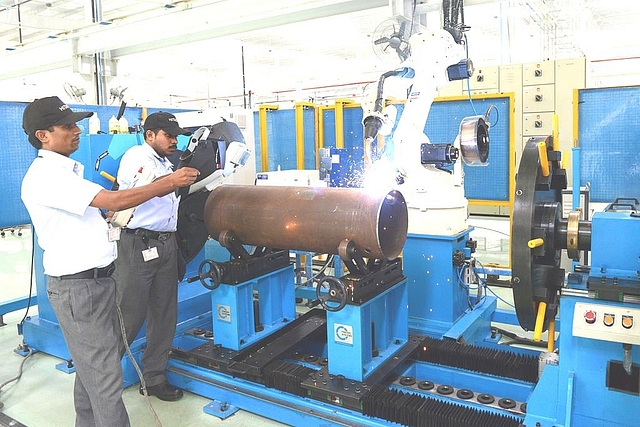
Covid-19: CII Suggests ‘Calibrated Opening’ Of Industrial Operations In Three Stages; Here Are The Details
The report has suggested a stage-wise and zone-wise restart of industrial operations to meet all essential needs of the economy.
Suggesting a slow and staggered lifting of lockdown, an industry chamber on Sunday advocated a cautious approach to reopening various sectors based on classification of geographies as red, amber and green, depending upon the number of novel coronavirus cases.
Emphasising on textiles and apparels, pharmaceuticals, food processing, minerals and metal, besides e-commerce, automobiles and chemicals as the key sectors, the Confederation of Indian Industry (CII), in a report, has highlighted the need to restart operations in a calibrated manner.
However, prior to the lifting of the lockdown, there has to be adequate notice given to all and an economic package announced, the CII report said.
The report has suggested a stage-wise and zone-wise restart of industrial operations to meet all essential needs of the economy, ensure protection of livelihoods and jobs, protect export market shares and meet export obligations, besides helping manage the import dependence of the economy.
“Given that the number of cases has rapidly increased and hotspots have emerged in the country over the last few days, and that the opening up of the economy across the country would need to be slow and staggered, it would be desirable to have three classifications of geographies as red, amber and green, based on the incidence of COVID cases,” the report said.
"The principle should be that we look at opening up in concentric circles around the red zones. The radiating heat map should turn from red in the inside to green on the outside. In other words, ‘Lock inside out’,” said Chandrajit Banerjee, Director-General, CII.
A more complex point is whether all industries can open in the green zones and which ones should open in the amber zone, assuming that none would be operational in the red zones other than essential and exempt services.
The point to stress is that all facilities that reopen must have requisite health, sanitation and screening systems in place to protect workers. Various measures have been suggested such as thermal checks, social distancing, factory sanitisation and so on.
Any enterprise which does not comply with these on a self-certification basis should be subject to stringent penalties, the report suggested.
However, prior to the lifting of the lockdown, there has to be adequate notice given to all and along with that, there should be announcement of an economic package, it said.
Prioritisation of industrial sectors is essential to reduce the spread of the pandemic while minimising the economic impact of the lockdown.
“As we begin to plan the restart of industry operations post COVID-19, CII has looked into the health, social and economic impact of the lockdown to arrive at the industry sectors to be accorded priority. CII has used four key indicators for prioritisation of sectors for a restart. These include sectors that are part of and support the essential goods and services ecosystem, labour intensive sectors that support jobs and livelihoods, sectors that are essential for protecting India’s export market share and gain the confidence of global markets besides sectors that will help us manage our imports to a minimum based on essential requirements for further production and export,” said Banerjee.
Textiles and apparels, 100 per cent operationalising of pharmaceuticals sector, food processing, minerals and metal besides, e-commerce, automobiles and chemicals are the key to a good restart, the report says.
Stage I opening, according to the CII report, include 100 per cent pharmaceuticals manufacturing, textiles and apparels, food processing and minerals and metals.
Stage II would entail opening with a gap of one or two weeks after the first stage sectors start their operations and includes agri market operations, e-commerce including food and groceries delivery, automobiles, chemicals especially those used for sanitation and other healthcare purposes and those that support pharmaceuticals and other essential sectors.
Stage III could be the remaining sectors, one or two weeks after the second stage sectors start operations, said the CII report.
Sectors that fall into green and amber zones are based on the levels of labour intensity of the sectors. Green zone sectors are those which are less labour intensive while sectors that fall into the amber zone are labour intensive.